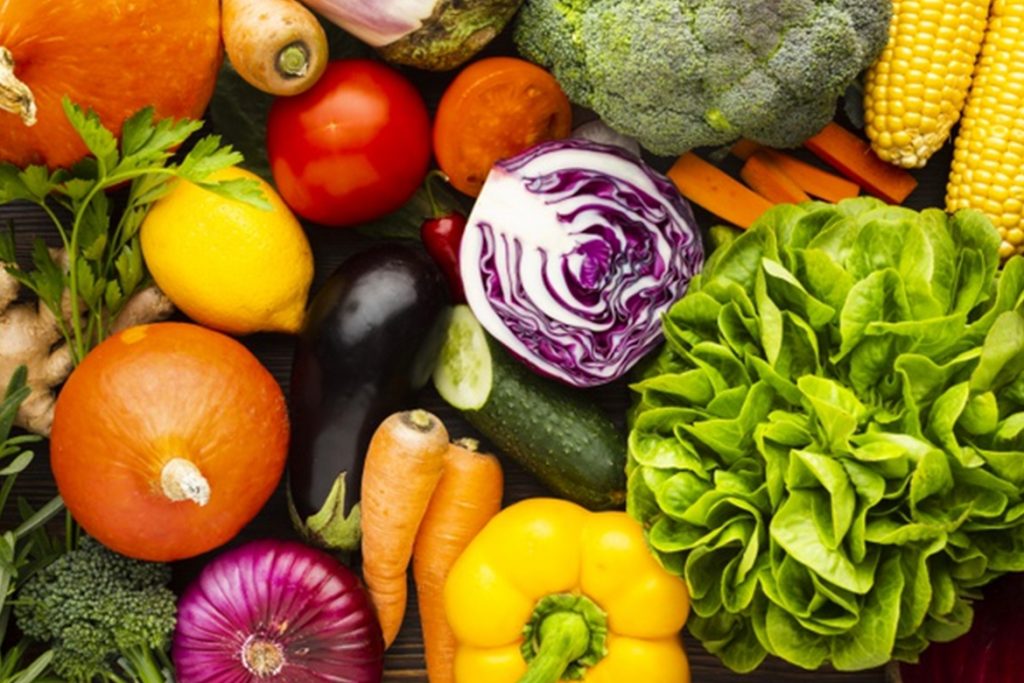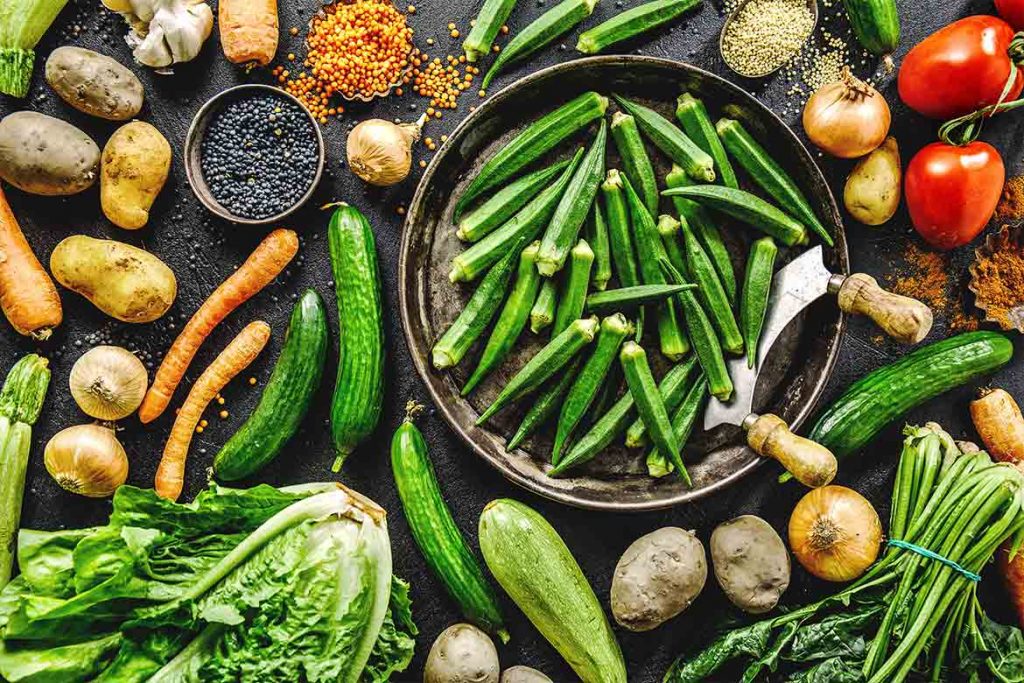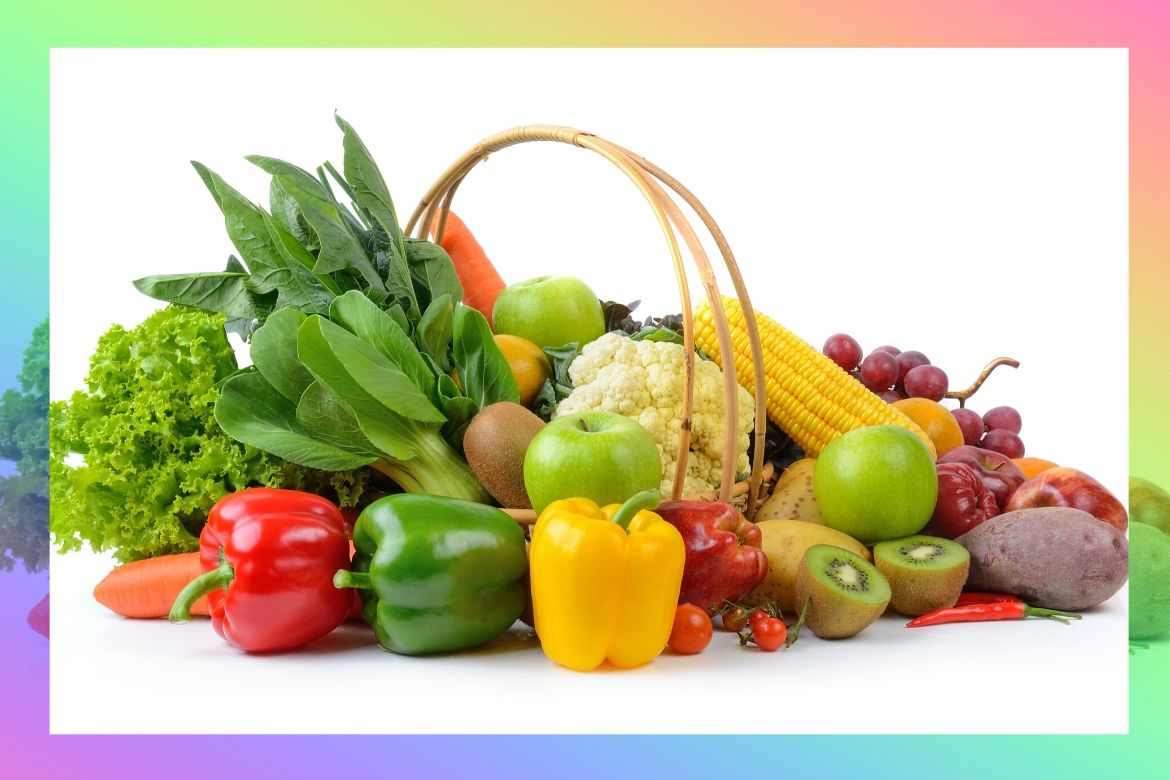Do you have to eat fruits and vegetables to be healthy? Not really.
Eating fruits and vegetables is frequently prescribed to live more, healthier lives. Perceptions show that healthy individuals who eat fruits and vegetables can reliably live into their 90’s and 100’s. While this may show that fruits and veggies can be a piece of a healthy way of life for a few, it doesn’t demonstrate that they’re required for everybody.
Also Read: Why Most of The People in India Cannot Afford Protein Diet
What number of fruits and vegetables do we have to eat? Do we need any whatsoever?

Here’s the current logical proof on fruits and vegetables.
1. What are fruits?
Fruits are the seed-containing part of different flowering plants. They develop only over the ground.
Various sorts of fruit
The general classes of fruit incorporate pome, citrus, tropical, melons, stone fruits, and berries. Most fruits taste sweet, in spite of the fact that citrus assortments are frequently acrid or unpleasant. Except for bananas, most trained fruits are delicious because of their high water content.
Nutritional structure of fruits
Also Read: Why you need a supplement even if you eat healthily
About the entirety of the calories in fruits originate from sugar — to be expected, given their sweet taste. Their net carbs length a huge range: 5 grams to 20 grams for every 100 grams (3.5 ounces) of fruit, contingent upon the sort. A solitary average sized orange has around 12 grams of carbs and a banana has in any event 23 grams.
Surveying the nutrition profiles of various fruits, we see that few give nutrient C and a couple of minerals. Be that as it may, genuine nutrient substance can differ contingent upon the sort of fruit, how and where it’s developed and put away, and to what extent it’s been sitting at a stand or basic food item rack.
Moreover, all fruits miss the mark in nutrient D and key minerals like calcium, magnesium, iron and zinc.
2. What are vegetables?
Talking from a herbal or cultivating perspective, vegetables are the leaves, stems or underlying foundations of plants. Nonetheless, numerous non-sweet fruits are regularly viewed as vegetables for eating or cooking purposes.
Various kinds of vegetables

Vegetables can be extensively ordered into four classes:
Also Read: The Wonder Food Raisins – Remedy for The Anemic
Over the ground vegetables: greens (spinach, lettuce, chard, and so on), cruciferous vegetables (broccoli, brussels grows, cabbage, cauliflower, kale, and so on), bulbs (onions, garlic), and growths (mushrooms).
Below-ground/root/bland vegetables: beets, carrots, parsnips, rutabagas, turnips, sweet potatoes, potatoes, sweet potatoes, and so forth.
Gourds: pumpkins, hard-shelled squashes, and other winter squashes.
Actually fruits yet rewarded like vegetables: avocados, olives, ringer peppers, eggplant, tomatoes, and zucchini. In contrast to different fruits, these aren’t sweet and are frequently arranged and overcome with different vegetables. Avocados and olives are novel among fruits and vegetables in light of the fact that the majority of their calories originate from fat as opposed to sugar or starch.
Nutritional synthesis of vegetables
Non-boring vegetables are keto-accommodating foods that give 5 or less grams of net carbs per 100-gram (3.5-ounce) serving. Paradoxically, root and boring vegetables have 6 to 17 grams of net carbs per serving.
Vegetables ordinarily contain moderate to high measures of fiber, particularly avocado — which additionally happens to be among the lowest in net carbs.
Overall, vegetables are more nutrient-thick than fruits, however their nutrient and mineral substance can likewise be influenced by factors like developing and capacity conditions. Most veggies regard excellent sources of potassium, and chime peppers and cruciferous vegetables are additionally high in nutrient C.
3. What number of fruits and vegetables should individuals eat every day?
Taking a gander at legitimate suggestions for fruit and vegetable admission in various nations, plainly they’re fundamentally all minor departure from “5 per day.” The US dietary rules, the UK National Health Service, and the World Health Organization every single set least that are commonly identical to two cups of fruit and over two cups of vegetables every day.
As indicated by the Centers for Disease Control, just 1 out of 10 grown-ups reliably meets the US Dietary Guidelines proposals for fruit and vegetable admission. Be that as it may, is this actually an issue?
Also Read: Ghee or Butter: What is Healthier
Some low-carb diet specialists would state no; that on the off chance that somebody is following a diet that addresses their issues for basic nutrients, eating a few servings of fruits and vegetables consistently isn’t essential.
Health associations express that their proposals for fruit and vegetable admission are proof based. In any case, as we’ve talked about already in different aides, there are various degrees of logical proof. What’s more, practically all these fruit and vegetable proposals are intended for somebody who is eating a standard Western diet or a low-fat, high-carb diet.
How about we investigate the high-quality proof accessible to see in the case of eating more fruits and vegetables has really been demonstrated to improve health.
4. Exploration on the advantages of eating fruits and vegetables
Corpulence
With barely any exemptions, eating more fruits and vegetables is standard weight reduction guidance. Be that as it may, on the off chance that we take a gander at the aftereffects of trial preliminaries where individuals really ate more — or if nothing else were urged to eat more — of these foods, that exhortation simply doesn’t appear to work for everybody.

A 2014 efficient audit of eight randomized controlled preliminaries (RCTs) enduring somewhere in the range of 4 and 52 weeks found that individuals appointed to expand their fruit and vegetable admission lost a normal of just 1.5 pounds more than those allocated to eat littler measures of these foods.
That year, specialists who distributed a precise audit of seven distinctive RCTs neglected to locate any quantifiable contrasts in weight change between individuals who devoured high versus low measures of fresh produce.
Notwithstanding, the mediations varied among the RCTs remembered for both of these investigations. At times, individuals were furnished with fresh fruits and vegetables or vouchers to buy them; in others, they just got counsel to devour even more a particular fruit or vegetable.
Besides, in the greater part of these examinations, analysts depended on announced produce consumption from the gatherings instead of closely observing their admission. Regularly it simply wasn’t evident whether individuals really wound up eating their appointed measures of fruits and vegetables or not.
Now and again, individuals who eat more fruits and vegetables may really put on weight since they don’t repay by curtailing different foods — and juice is by all accounts particularly dangerous.
Also Read:-Role Of Women In The Family!
For example, in one RCT, when overweight and stout individuals were given fresh fruits and vegetables to add to their diets for about two months, they put on twice as much weight as lean members, who reacted to expanded produce consumption by eating less of different foods. Be that as it may, every one of the three gatherings put on weight subsequent to expending a similar measure of produce in juice structure during a second eight-week time span. In any case, corpulent members picked up the most.
Then again, supplanting highly processed food with fruits and vegetables isn’t just a shrewd decision nutritionally; it may likewise prompt weight reduction.
In a three-month study, overweight ladies who were offered vouchers to buy fresh deliver shed 6 pounds, though the individuals who were offered vouchers to buy any sort of food supplies increased 4 pounds by the examination’s end.
Overall, eating more fruit and vegetables hasn’t been appeared to create significant weight reduction in most exploratory examinations.
However we regularly hear that doing so is the way to accomplishing and keeping up a healthy weight. What is the reason for this counsel?
For a considerable length of time, it’s basically been bigger yet lower-quality observational (likewise called epidemiological) research. For example, a 2015 orderly audit dissecting 17 such examinations discovered factually feeble relationship between eating a ton of produce and lower body weight and abdomen size.
In observational nutrition contemplates, a danger proportion (HR), chances proportion (OR) or relative risk (RR) that is close to 1 methods there is practically no detectable distinction. That implies any OR under 2 or more prominent than 0.50 firmly proposes that any relationship between a conduct (e.g., eating produce) and a result (e.g., weight reduction) is perhaps arbitrary and bogus.
What were the ORs in this investigation? They were 0.83 for high admission of fruits or vegetables alone and 0.91 for high admission of fruits and vegetables joined. Furthermore, even the investigation creators recognized that “The present meta-examination is by all accounts constrained by low investigation quality.”
Also Read:-What to eat for a healthy diet
Diabetes and metabolic condition
Fruits and vegetables are commonly viewed as diabetes-accommodating foods. Truth be told, about a wide range of produce make the “low GI foods” list on the American Diabetes Association site, except for melons and pineapple.
In any case, how does sticking to “5 every day” or comparative dietary exhortation influence blood sugar control and insulin opposition? The proof from clinical preliminaries is blended.

One deliberate audit of eight RCTs inspecting the impacts of fruit and vegetable admission in individuals with metabolic condition found that in spite of the fact that blood pressure slightly improved in the individuals who ate more produce, fasting blood sugar levels were the same among the gatherings.
The equivalent remained constant for abdomen circuit, triglycerides and HDL cholesterol levels — which are all viewed as markers of insulin opposition when outside the ordinary range.
In 2017, scientists broke down outcomes from four RCTs with fruit and vegetable mediations in individuals with type 2 diabetes or other health conditions. The gatherings doled out to eat more fruits and vegetables improved their nutrient C and beta-carotene admission yet expended fundamentally more carbs and calories. That doesn’t sound very diabetes-accommodating, isn’t that right?
In one RCT distributed in Diabetes Care — a journal of the American Diabetes Association — analysts alloted overweight grown-ups to expend two, four, or seven parts of fruits and vegetables every day for 12 weeks. At last, none of the gatherings encountered any improvement in insulin resistance.
Be that as it may, results from another RCT recommend that including low-carb vegetables like broccoli and broccoli sprouts may help lower insulin levels and improve insulin affectability in grown-ups with type 2 diabetes.
Obviously, neither the exploratory nor control bunch were devouring low-carb or keto diets. It’s obscure in the case of including broccoli or other green vegetables to a low-carb or keto diet would give any further advantage on insulin opposition.
Since low-carb diets by definition wipe out two likely guilty parties behind insulin opposition — sugar and other high-carb foods — there may as of now be a maximal advantage which may not increment by including more vegetables. Controlled preliminaries investigating this would should be finished.
Shouldn’t something be said about lower-quality observational investigations that propose eating a lot of fruits and vegetables can help ensure against diabetes? Huge meta-examinations of these investigations have demonstrated feeble relationship among fruit and vegetable admission and diabetes risk.
At last, in spite of the fact that outcomes from observational nutrition concentrates frequently have such feeble relationships that they’re likely because of possibility, every so often there are special cases.
For instance, a recent report in pregnant ladies found that the individuals who detailed expending the highest measure of fruit during their subsequent trimester had a 480% more serious risk (OR of 4.82) of creating gestational diabetes than ladies with the lowest revealed fruit admissions.
Controlled examinations investigating this relationship are required. Nonetheless, it surely appears to be conceivable that eating a lot of fruit (“nature’s treats”) during pregnancy — a period of emotional hormonal changes and insulin obstruction — could improve a lady’s probability of creating gestational diabetes.
Heart disease
Are fruits and vegetables heart-healthy? Albeit some exploratory examination recommends that eating more produce may diminish some cardiovascular disease (CVD) risk factors, the proof to date is uncertain regarding clinical results.
For example, in 2013 scientists directed an orderly survey of 10 RCTs examining in the case of eating more fruits and vegetables prompted enhancements in heart health markers. They revealed that the preliminary plans varied altogether and frequently included other nutrition and way of life intercessions that may have added to the beneficial consequences for CVD risk.
Their decision? Further preliminaries researching higher fruit and vegetable admission as the sole mediation are required.
Another precise survey of RCTs saw that high potassium admission appeared as beneficial for the supply routes, while the impacts of high fruit and vegetable admission on blood vessel work weren’t clear.
Later RCTs propose that boosting produce admission may expand blood levels of antioxidants that may improve HDL work and diminish inflammation in those at high risk for CVD, for example, those with diabetes.
However others found no decrease in CVD risk factors in overweight individuals who devoured seven servings of produce for each day contrasted with the individuals who expended two servings for each day for 12 weeks. In these investigations, blood levels of lutein (an antioxidant found in vegetables) were estimated to affirm consistence among the various gatherings.
The proof from observational examinations here is exceptionally frail. For example, a huge 2017 meta-examination of 95 investigations revealed just a 8 percent decrease (RR of 0.92) in CVD risk for each 200 grams of fruits and vegetables individuals announced devouring every day, up to a limit of 800 grams for each day (approximately 10 servings).
Notwithstanding, in spite of the powerless affiliation and low nature of proof, significant clinical associations refer to this paper as decisive help that fruits and vegetable lessen heart disease occasions.
Is it conceivable that you can extraordinarily diminish your risk of heart disease exclusively by eating 10 servings of fruits and vegetables consistently? The relative risk discoveries propose that this affiliation has a high possibility of being arbitrary and bogus.
Also, given that food-recurrence surveys and food reviews in observational examinations are famously incorrect, it bodes well that we ought not depend on this low-quality proof to settle on singular health choices.
More then likely, any individual who really eats 10 servings of produce every day most likely additionally participates in different habits known to ensure heart health, for example, turning out to be consistently and evading low quality nourishment, unnecessary liquor utilization and smoking.
Malignant growth
“Eating loads of fruits and vegetables can help lessen your malignancy risk.” This message is taken verbatim from the site of the American Cancer Society. In any case, is there solid logical proof that eating a lot of fruits and vegetables will help shield you from malignancy?
In spite of the fact that fruits and vegetables are whole foods that contain beneficial nutrients, it’s too soon to make that guarantee for them. Truth be told, it’s too soon to make that guarantee for any foods with assurance, in light of the fact that next to no high-quality test research has inspected how explicit foods influence malignant growth risk and movement.
It’s realized that damage to DNA in cells may raise the risk of creating disease later on. One randomized traverse concentrate in healthy individuals found that expending kiwifruit for three weeks prompted expanded antioxidant activity that helped fix DNA, whether or not little or enormous sums were devoured.
Comparative outcomes were found in youthful male smokers who expended three servings of broccoli for each day for 10 days.
Notwithstanding, different investigations haven’t demonstrated any improvement in DNA fix in individuals who expanded their fruit and vegetable admission. What’s more, one even proposed that cruciferous vegetables may incidentally damage DNA, in spite of the fact that this impact appears to vanish inside a few hours.
Can healthy individuals decrease their opportunity of creating malignant growth by expending antioxidants found in plants? Now, we don’t have the foggiest idea. All things considered, our bodies have their own worked in antioxidant frameworks set up that can help fix cell damage. Extra preliminaries investigating the impacts of fruits and vegetables on DNA fix would give us more data about this.
Cruciferous vegetables like broccoli and cabbage contain aggravates that may help lessen malignant growth risk in a few different ways, for example, diminishing inflammation and improving cell signaling.
However it shows up there’s presumably an edge of these defensive exacerbates that can be ingested, with the goal that high admissions offer no further advantage than devouring progressively unassuming sums.
Numerous fruits and vegetables have different phytochemicals (actually “plant synthetic substances”) with potential anti-malignant growth activity, for example, resveratrol and sulforaphane.
Be that as it may, their belongings have been concentrated essentially in test cylinders and creatures. High-quality human examination is required before any ends can be made about their utilization in malignancy anticipation or treatment.
In contrast to the constrained measure of trial research, a lot of observational investigations have investigated the connection among fruit and vegetable admission and malignant growth risk. Specialists who direct efficient audits of these investigations frequently presume that individuals who eat the most fruits and vegetables decline their risk of creating malignant growth.
However these investigations uncover powerless affiliations (RRs of 0.78 to 0.92) between eating a great deal of produce and being determined to have any sort of malignant growth, including bosom, lung, colon, bladder, and non-Hodgkin’s lymphoma.
In synopsis, eating fruits and vegetables — particularly cruciferous sorts — may diminish your risk of malignant growth, however considerably more thorough examination is required before we can say this without a doubt.
